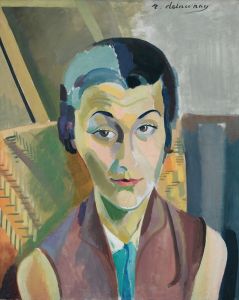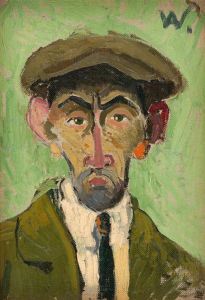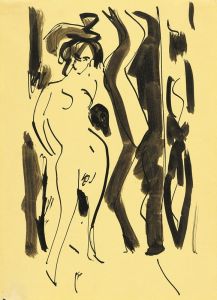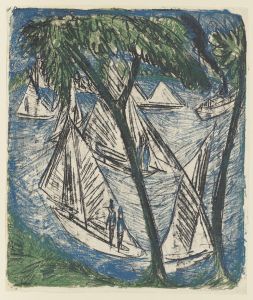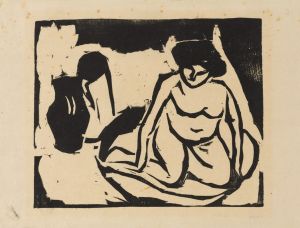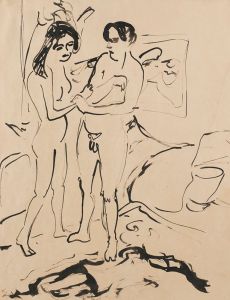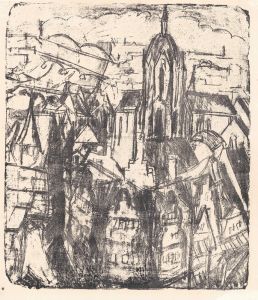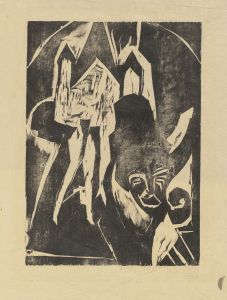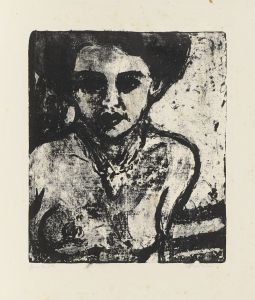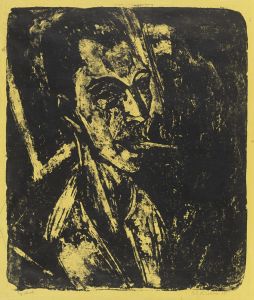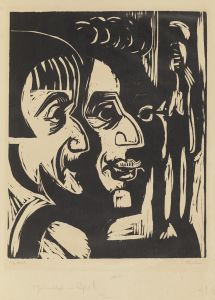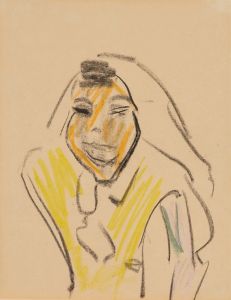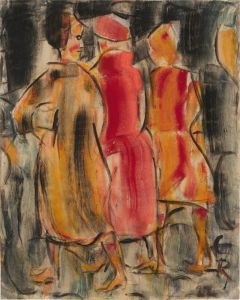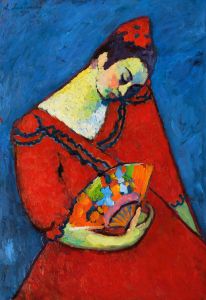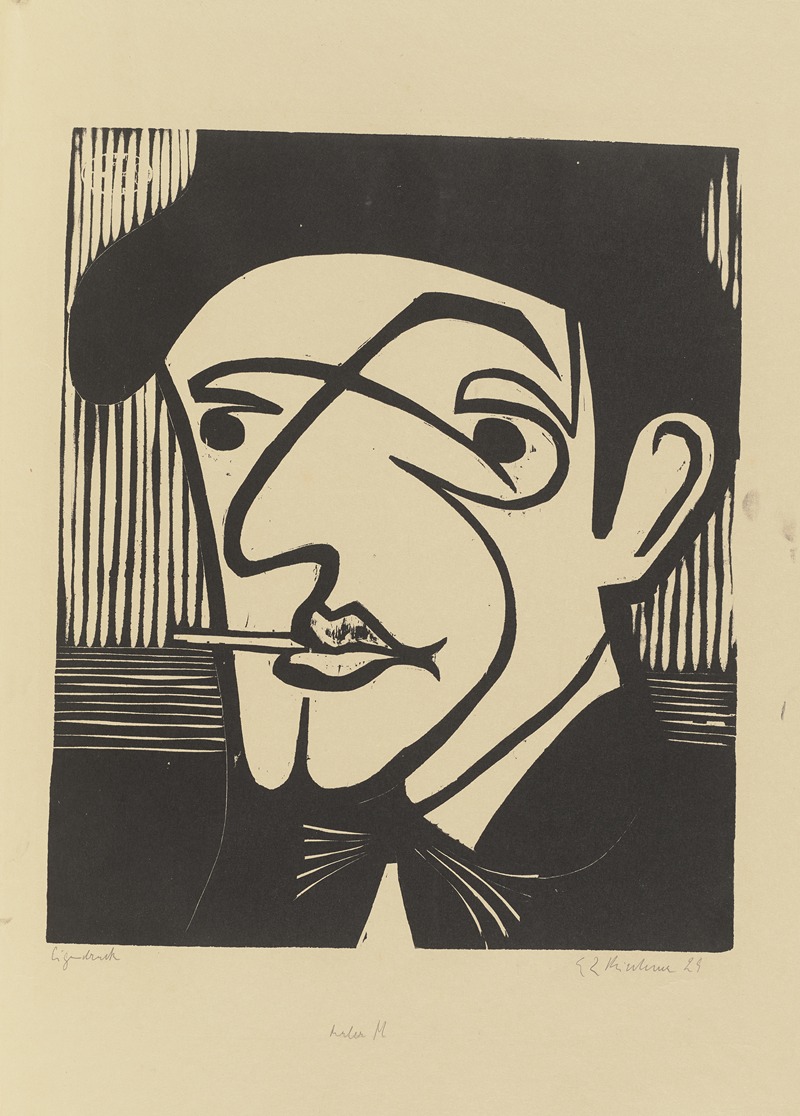
Maler M.
A hand-painted replica of Ernst Ludwig Kirchner’s masterpiece Maler M., meticulously crafted by professional artists to capture the true essence of the original. Each piece is created with museum-quality canvas and rare mineral pigments, carefully painted by experienced artists with delicate brushstrokes and rich, layered colors to perfectly recreate the texture of the original artwork. Unlike machine-printed reproductions, this hand-painted version brings the painting to life, infused with the artist’s emotions and skill in every stroke. Whether for personal collection or home decoration, it instantly elevates the artistic atmosphere of any space.
Ernst Ludwig Kirchner was a prominent German expressionist painter and one of the founding members of the influential art group Die Brücke (The Bridge), which played a crucial role in the development of modern art in the early 20th century. Kirchner's work is characterized by its bold use of color, dynamic compositions, and an expressive style that sought to capture the emotional and psychological states of his subjects.
"Maler M." is one of Kirchner's notable works, created during a period when he was deeply involved with the Die Brücke movement. This painting, like many of Kirchner's works, reflects the artist's interest in exploring the human form and the psychological depth of his subjects. The title "Maler M." translates to "Painter M." in English, suggesting that the subject of the painting is an artist, possibly a colleague or a figure within Kirchner's artistic circle. However, the specific identity of "M." is not definitively documented in historical records.
Kirchner's style in "Maler M." is emblematic of his broader artistic approach during the Die Brücke period, which was heavily influenced by the desire to break away from traditional academic art forms and embrace a more raw and emotive aesthetic. The painting likely features the vibrant colors and bold brushwork that are characteristic of Kirchner's expressionist style. His use of color was not merely decorative but served to convey the emotional intensity and inner life of the subject.
The Die Brücke group, active primarily between 1905 and 1913, sought to create a bridge between the past and the future of art, drawing inspiration from sources as diverse as African and Oceanic art, as well as the works of Vincent van Gogh and Edvard Munch. Kirchner and his contemporaries were interested in capturing the essence of modern life, often depicting urban scenes, nudes, and portraits with a sense of immediacy and vitality.
Kirchner's work, including "Maler M.," often reflects the tensions and anxieties of the early 20th century, a time of rapid social and technological change. His paintings are known for their psychological depth, often portraying subjects with a sense of introspection or emotional complexity. This focus on the inner life of his subjects is a hallmark of expressionism, which sought to depict not just the external appearance of the world but also the internal experiences of individuals.
Throughout his career, Kirchner faced numerous personal and professional challenges, including struggles with mental health and the impact of World War I. Despite these difficulties, he remained a prolific artist, and his work continued to evolve over time. Today, Kirchner is regarded as one of the leading figures of German expressionism, and his paintings are held in high esteem by art historians and collectors alike.
"Maler M." is an example of Kirchner's ability to convey the complexity of human emotion through his distinctive artistic style. While specific details about the painting's subject may remain elusive, the work stands as a testament to Kirchner's skill in capturing the essence of his subjects and his contributions to the expressionist movement.





